Travel Guide, Ha Giang Loop
[2024 UPDATED] Ultimate Guide to the Ha Giang Loop Road Trip
The Ha Giang loop is a circular route that is best explored on two wheels that runs along Vietnam’s border with China in its far north. This spectacular route, weaving through the Ha Giang province, is not just a journey through roads less traveled; it’s a voyage into the heart of Vietnam’s rich cultural tapestry and breathtaking natural beauty. Ha Giang, with its challenging mountain passes, lush valleys, and vibrant ethnic cultures, offers an experience that resonates deeply with the spirit of exploration and adventure.
About Ha Giang Loop
The Ha Giang Loop is a motorbike loop that circles Ha Giang, the northernmost province of Vietnam that borders China. You guessed it. Starting approximately five hours north of Hanoi, it is east of Sapa. Here are some of the most beautiful road sections I believe you will find in Vietnam, Southeast Asia, and the world. I’d love to visit, so feel free to disagree in the comments and tell me of somewhere even more beautiful!
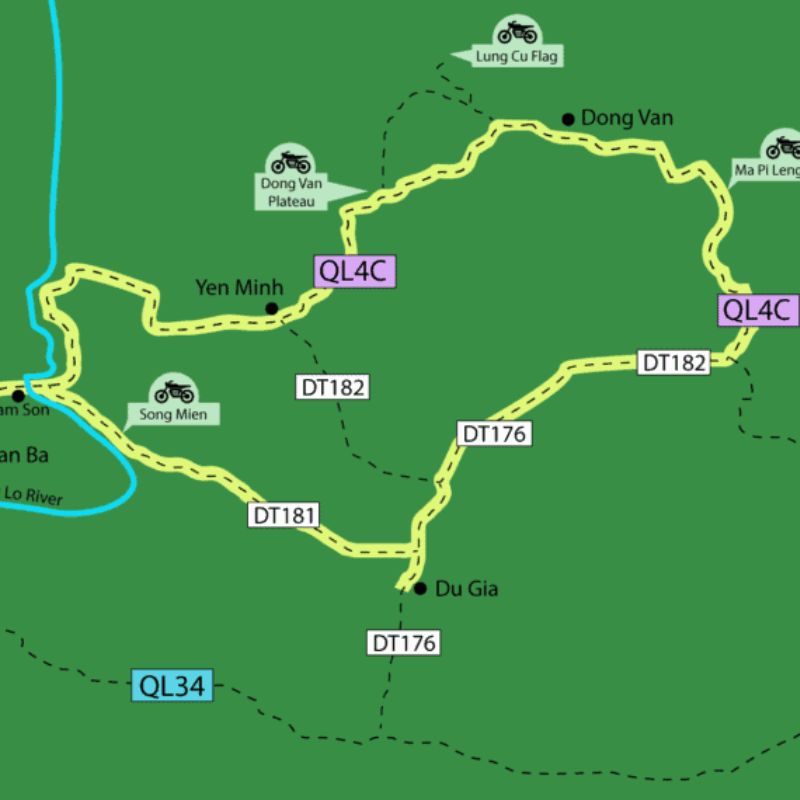
Approximately three to four days are needed to finish the entire loop, but it’s best to allow at least four days so you can take your time and see everything. I don’t think I could complete the loop in less than four days.
This fascinating route passes through canyons, geological faults, high passes, valleys, and abysses. Its main attraction is the well-known Ma Pi Leng Pass, one of Vietnam’s four magnificent mountain peaks. The allure of a Ha Giang loop tour is enhanced by the opportunity to visit 22 different ethnic groups, each with their own unique cultural heritage and mouthwatering cuisine.
How to get to Ha Giang?
Known as one of Southeast Asia’s most amazing overland treks, the Ha Giang loop is an absolute must for serious backpackers. Starting in Quan Ba and traveling through Yen Minh, Dong Van, Meo Vac, and back to Quan Ba, the route covers about 350 kilometers.
Getting to Ha Giang, a province in the northernmost part of Vietnam, involves several steps, depending on where you are starting from. Here are the most common routes:
From Hanoi
Hanoi is the closest major city to Ha Giang and the most common starting point for travelers.
By Bus:
- Duration: Approximately 6-8 hours.
- Options: There are several bus services, including sleeper and express buses.
- Departure Points: Buses typically depart from My Dinh, Gia Lam, or Nuoc Ngam bus station in Hanoi.
- Booking: Tickets can be purchased online or at the bus station.
By Motorbike:
- Duration: It takes about 8-10 hours, depending on the route and speed.
- Route: Follow the National Highway 2 and then QL2C to Ha Giang.
- Note: This option is suitable for experienced riders, as the route can be challenging.
By Private Car or Taxi:
- Duration: About 6-8 hours.
- Advantage: More comfortable and flexible but more expensive.
- Booking: Can be arranged through travel agencies or hotel concierges.
From Other Cities in Vietnam
By Air: The nearest airport to Ha Giang is Noi Bai International Airport in Hanoi. After reaching Hanoi, follow the above-mentioned methods.
By Train/Bus: Reach Hanoi via train or bus from other cities, then proceed as above.
Riding a thrilling motorbike adventure is unquestionably the most captivating way to experience the Ha Giang loop. This journey explores undiscovered regions of Vietnam by traveling through ethnic villages, tribal settlements, barren valleys, imposing limestone peaks, and towering mountains. The route is a winding road that winds through the highlands and parallels the border between Vietnam and China.
What is the best month for Ha Giang Loop?
Late September through November is the ideal time to embark on the Ha Giang loop motorbike adventure. When visiting Ha Giang at this time of year, visitors can take in the picturesque golden rice terraces.
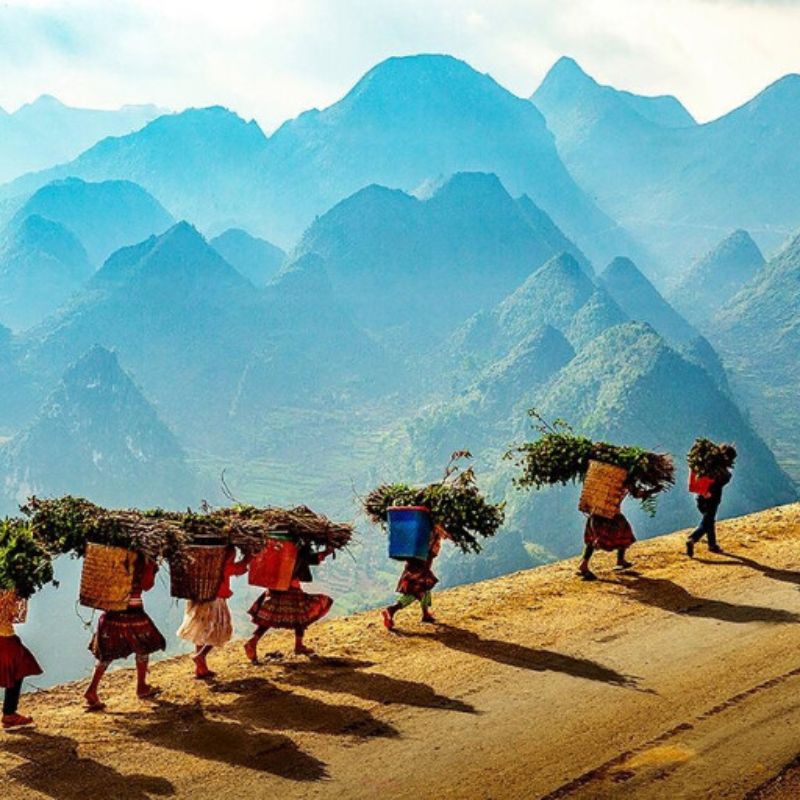
Even though the weather gets chilly in December, the Ha Giang loop offers serene surroundings, charming winter foliage, and misty valleys.
Additionally, from January to March, when the town is in the dry season with little rain, you can experience the Ha Giang loop. This is the time of year when you can enjoy the festive atmosphere of the Lunar New Year.
The top highlights of the scenic Ha Giang loop
The Ha Giang Loop, a breathtaking journey through Vietnam’s northernmost province, is renowned for its stunning landscapes, rich cultural heritage, and thrilling roads. Here are the top highlights along the loop:
Quan Ba Heaven Gate
Quan Ba Heaven Gate is more than just a geographical marker; it’s a stunning natural gateway to the wonders of Ha Giang. Situated at a high altitude, it offers breathtaking views of the verdant Tam Son valley below, characterized by its serene beauty and distinctive twin hills. This spot is not only a visual treat but also an ideal place for photography enthusiasts. The Heaven Gate’s elevation gives a sense of being on top of the world, making it a memorable start to the Ha Giang Loop adventure.
The Twin Mountains (Fairy Bosom)
The Twin Mountains, locally known as the Fairy Bosom, are nestled near Tam Son town. These unique hills, resembling the shape of a woman’s bosom, are steeped in local folklore and are considered a symbol of fertility by the indigenous people. The surrounding landscape, with its rice fields and traditional houses, adds to the charm of this natural attraction. The site’s blend of natural beauty and cultural significance makes it a must-visit spot on the loop.
Ma Pi Leng Pass
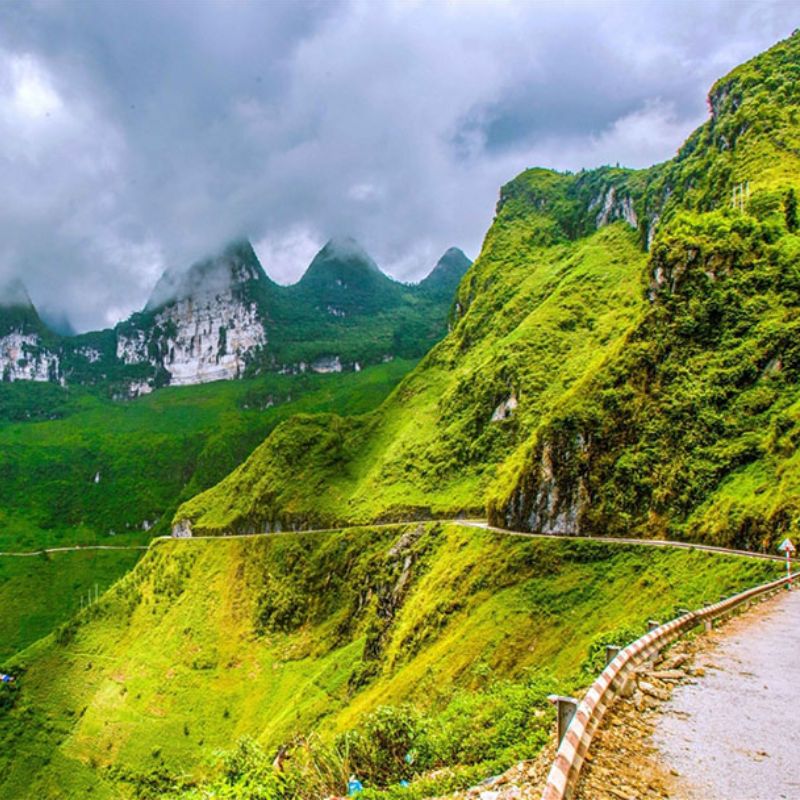
Ma Pi Leng Pass is one of the most spectacular roads in Vietnam, often referred to as the “King of the Vietnamese mountain passes.” This challenging road snakes through towering cliffs and deep valleys, offering dramatic and awe-inspiring views, especially from the famous Ma Pi Leng viewpoint. It’s a paradise for motorbike enthusiasts, with its hairpin bends and steep inclines providing an exhilarating riding experience. The pass connects Dong Van and Meo Vac towns and is a highlight for anyone seeking adventure and unparalleled natural beauty.
Dong Van Old Quarter
The Dong Van Old Quarter is a quaint and historical part of Dong Van town, showcasing a blend of traditional H’Mong and Chinese architectural styles. The old quarter’s narrow streets, lined with old houses made of clay bricks and tiled roofs, evoke a sense of stepping back in time. It’s a great place to explore on foot, discover unique local handicrafts, and sample traditional foods. The weekly market is a cultural spectacle, bringing together various ethnic groups in a vibrant display of customs and commerce.
Lung Cu Flag Tower
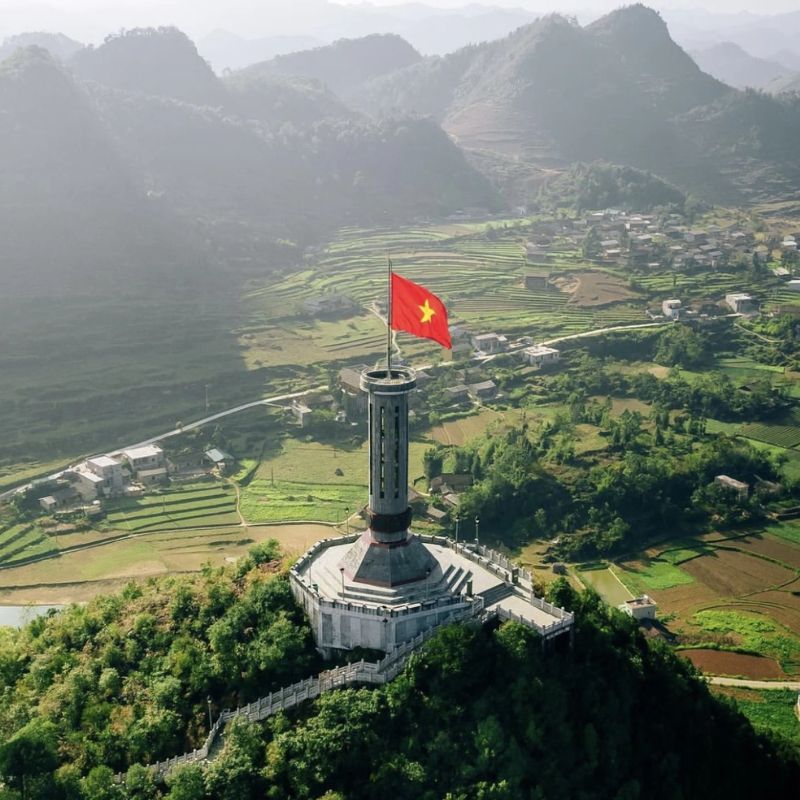
Situated near Dong Van, the Lung Cu Flag Tower marks the northernmost point of Vietnam. It’s a symbol of national pride, standing tall and overlooking the scenic landscape that borders China. Visitors can climb to the top of the tower, where a large Vietnamese flag flies, offering panoramic views of the surrounding hills and valleys. The site is not only a tourist attraction but also a poignant reminder of Vietnam’s historical struggles and triumphs.
Hoang Su Phi Rice Terraces
The Hoang Su Phi Rice Terraces are a breathtaking sight, especially during the planting and harvesting seasons when they turn into a mosaic of vibrant greens and golden yellows. These terraces are not just agricultural feats but also a testament to the ethnic groups’ harmonious relationship with nature. Exploring these terraces offers a peaceful and picturesque experience, allowing visitors to appreciate the intricate and labor-intensive farming practices of the local communities.
Ha Giang loop 4 days itinerary
Day 1: Hanoi – Ha Giang – 0km Milestone – Quan Ba Twin Mountains – Pho Bang
It takes around 6 hours to travel from Hanoi to Ha Giang by bus. For time efficiency and to maximize enjoyment, consider catching an early morning bus and resting during the journey. Upon arrival, rent a motorbike to begin your exploration of Ha Giang. Be careful to secure your luggage neatly on the bike and take a short rest before starting your adventure.
Quan Ba – Yen Minh
In Quan Ba, two must-visit spots are the Quan Ba Twin Mountains and the 0km Milestone.
0km Milestone
Located in the center of Ha Giang city, this spot is easy to find and marks the intersection between Ha Noi city and Ha Giang region. Enjoy a leisurely breakfast in the city before heading here for photos.
Address: P. Nguyen Trai, Ha Giang city, Ha Giang province.
Quan Ba Twin Mountains
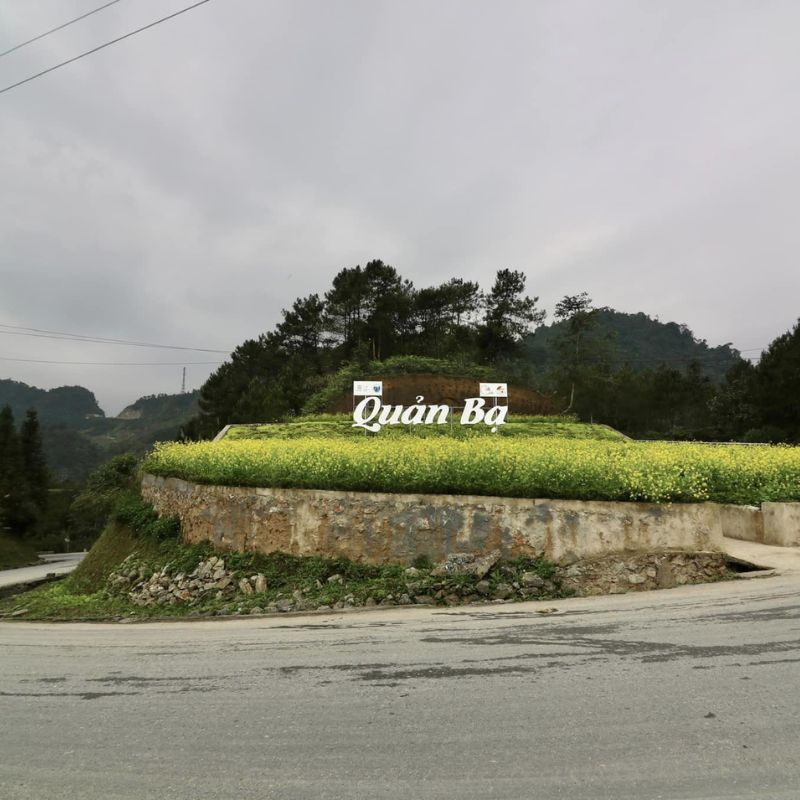
Also known as the Fairy Bosom, the Quan Ba Twin Mountains surprise visitors with their magnificent natural formation. Located amidst vast green rice fields, the view from above is poetic and breathtaking. It’s about 46km north of Ha Giang city, past the Bac Sum slope. A few kilometers further, you’ll find the Quan Ba Heaven Gate, a popular spot in the travel community, marking the start of the Happiness Road leading to the Dong Van Plateau. Here, you can relax, enjoy a coffee, and admire the clouds and scenery.
Shortly after, you’ll see the famous Lone Tree on the road to Yen Minh, another popular check-in spot. Upon reaching Yen Minh town, have lunch and rest to prepare for the afternoon journey to Pho Bang.
Rest and Dinner in Pho Bang
Consider staying at an interesting homestay built in traditional H’mong architecture, like Lao Xa’s ancient house. Here, you can experience the unique culture of the ethnic groups. Pho Bang town doesn’t offer many activities for tourists in the evening, so take this opportunity to rest after a long day and prepare for the trip to Dong Van the next day.
Day 2: Dong Van Stone Plateau – Lung Cu Flag Tower
Dong Van Stone Plateau
Recognized by UNESCO as a global geopark, the Dong Van Stone Plateau holds significant geological history. The unique karst landscapes and the serene life of the local people here are indescribably beautiful.
Dong Van Town – Dong Van Old Quarter – Lung Cu Flag Tower
The second night of your 4-day, 3-night Ha Giang trip will be in Dong Van town. Here, you can choose from a variety of hotels, homestays, and guesthouses. Dong Van is busier than Pho Bang and offers a wider range of food and accommodation options.
Dong Van Old Quarter
The Old Quarter preserves the unique culture of the H’Mong people and hosts famous markets attracting many visitors. The ancient stone houses and mossy stone fences give a sense of tranquility and authenticity.
Lung Cu Flag Tower
The Lung Cu Flag Tower is a historical landmark and the northernmost point of Vietnam. From the waiting area, climb 279 steps to the Dragon Mountain peak, where the flag tower stands. Although the climb is challenging, it’s a proud moment to reach this historical checkpoint. The view of the Then Pa fields and the peaceful life of the H’Mong people in Lo Lo Chai village is an unforgettable sight.
Day 3: Ma Pi Leng Pass – Nho Que River – Meo Vac
Ready for day 3 of your trip? The more you explore Ha Giang, the more breathtaking landscapes you’ll discover in this northern region of Vietnam.
Ma Pi Leng Pass
Following the Happiness Road, you’ll encounter Ma Pi Leng Pass, one of the four great passes in Northern Vietnam. Characterized by hairpin turns, with hills on one side and valleys on the other, it’s a magnet for bikers who wish to conquer this route. For thrill-seekers, there are daunting check-in points like the Death Stone Cliff and White Rock Cliff.
Nho Que River – Tu San Alley
A highlight of the third day is a boat trip along the Nho Que River. From Ma Pi Leng, head to the boat dock at Xin Cai or Ta Lang village. Be prepared for a winding 2km walk to reach the dock. Carry light gear and wear proper shoes.
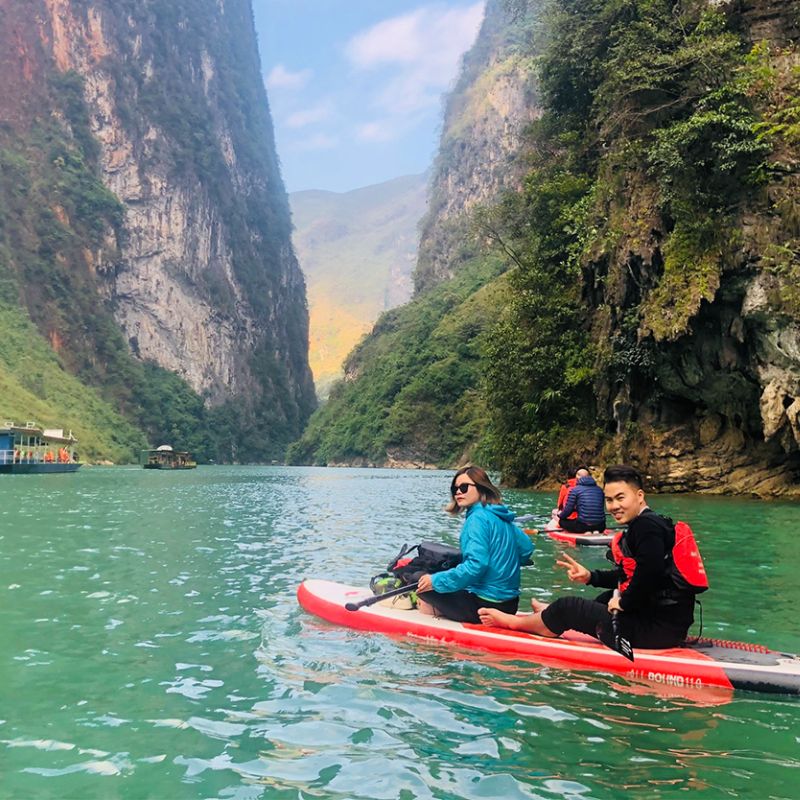
Boat options on the Nho Que River include:
- Motorboats: Prices vary from 100,000 to 150,000 VND per person, often shared or for group guests.
- Manual boats: Choose between iron or wooden boats. If inexperienced, you can hire a rower for 100,000 to 150,000 VND per person.
- Kayaks: The cheapest option at about 50,000 VND per person, but ensure you have kayaking experience, good health, and can swim.
Floating down the Nho Que River, the Tu San Alley, the deepest gorge in Southeast Asia, comes into view with its majestic, towering cliffs. You might even spot a group of langurs native to this area.
Meo Vac Town
After a long day of exploration, head to Meo Vac for the third night’s stay. The town offers a variety of guesthouses, hotels, and homestays. For an ethnic experience, consider staying in a homestay as suggested by Klook.
Day 4: Meo Vac – Ha Giang City – Hanoi
Explore Meo Vac
If you visit around March or April according to the lunar calendar, check out the famous Khau Vai Love Market in Meo Vac. Additionally, you can explore the Lo Lo cultural village and engage in artistic or community activities. Don’t miss trying local specialties like five-color sticky rice, green vegetables, Au Tau porridge, grilled moss, men men (steamed cornmeal), and corn wine with yeast.
Return to Ha Giang City – Back to Hanoi
From Meo Vac, there are three routes back to Ha Giang. You can follow the same route as Day 1 through Yen Minh – Quan Ba. For a more adventurous route, consider the Mau Due-Lung Ho route, which is more challenging and suitable for experienced riders. The last route, the easiest and longest, takes you along QL4C then down to QL34, passing through Cao Bang province. Choose the route that best fits your time and personal schedule.
Image | Tour | Price | Quantity | Add to cart |
|---|---|---|---|---|
$ 138 | ||||
$ 172 |
Where to Stay in Ha Giang
There are several places to stay along the Ha Giang Loop road trip, even though it’s the less-traveled route. Here is where to stay in the town of Ha-Giang, but we’ve highlighted the best spots to stay along the Ha-Giang in our itinerary below:
Homestays in Ha Giang
Traditional Ethnic Homestays: For an authentic experience, consider staying at places like Yen Minh Homestay in a small village, where you can immerse yourself in the daily life of ethnic groups such as the H’Mong and Dao. Another great option is Lo Lo Homestay in Meo Vac, known for its traditional architecture and communal dining experiences.
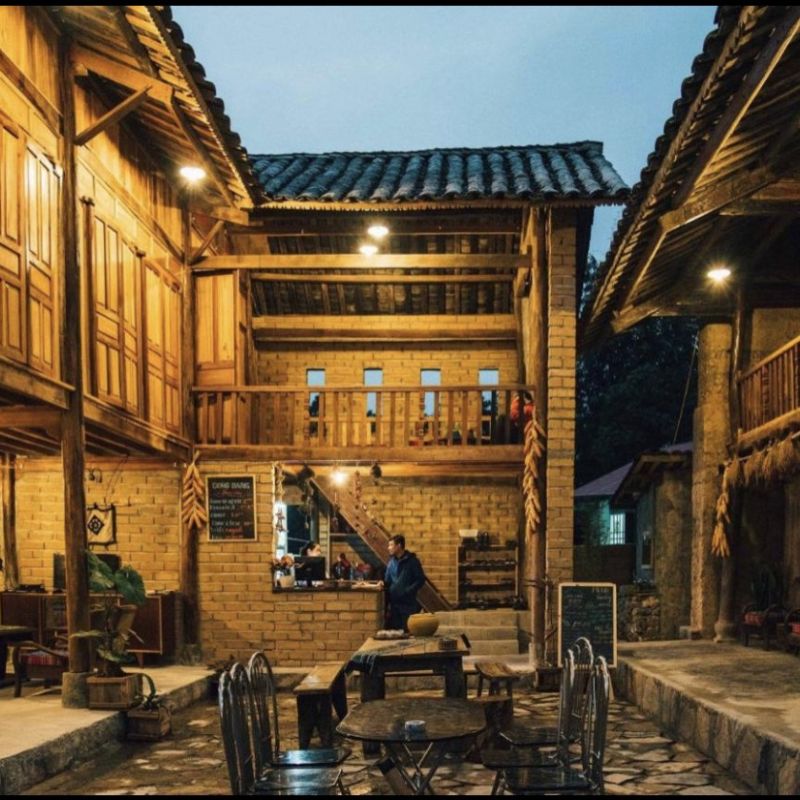
Eco-Friendly Homestays: Du Gia Eco Homestay in Du Gia offers an eco-tourism experience with its organic gardens and involvement in local sustainability projects. This homestay blends traditional practices with a focus on environmental conservation.
Hotels and Guesthouses
Budget Guesthouses: In Ha Giang city, Truong Xuan Resort is a popular choice, known for its family-run hospitality and basic yet comfortable amenities. Another option is Lam Tung Hotel in Dong Van, which offers a budget-friendly stay with essential facilities.
Mid-Range Hotels: For more comfort, consider Hoang Su Phi Lodge in Hoang Su Phi district. This hotel offers modern facilities, including Wi-Fi and on-site dining, in a more traditional setting. Kiki’s House in Ha Giang City is another mid-range hotel that provides a good balance between comfort and local charm.
Resorts and Boutique Hotels
Boutique Hotels: Auberge de Meo Vac – Mountain Lodge is a boutique hotel in Meo Vac, showcasing unique local art and textiles in its decor. The hotel offers a cozy and personalized experience.
Resorts: Pan Hou Village Eco Resort in Hoang Su Phi is set in a picturesque location and provides high-end amenities like a spa and gourmet dining. This resort is ideal for travelers looking for luxury in a natural setting.
Camping and Adventure Lodges
Camping Sites: Nam Dam Village Camping offers organized camping experiences where you can enjoy the beautiful landscapes of Ha Giang in a close-to-nature setting.
Adventure Lodges: Jungleman Homestay & Adventure in Ha Giang city caters to outdoor enthusiasts with activities like trekking and motorbiking. It’s a perfect base for those seeking adventure and cultural exploration.
Which bike to choose for the Ha Giang Loop Road Trip?
Choosing the right motorbike for the Ha Giang Loop is crucial for a safe and enjoyable journey. Here are some popular bike options:

Honda Wave/Semi-automatic Bikes:
- Engine: Around 110cc.
- Suitability: Ideal for beginners due to their light weight and ease of handling.
- Pros: Fuel-efficient and reliable.
- Cons: Less power for steep inclines.
Honda XR or Yamaha XTZ (Manual Bikes):
- Engine: 150cc to 250cc.
- Suitability: Best for experienced riders; offers more power and control on rugged terrains.
- Pros: Better for steep and challenging parts of the loop.
- Cons: Can be more challenging for less experienced riders.
Honda Winner (Sports Bike):
- Engine: 150cc.
- Suitability: Good for those who are comfortable with manual transmission but want something lighter than the XR or XTZ.
- Pros: Agile and fun to ride.
- Cons: Less comfortable for very long rides.
Scooters (Automatic):
- Engine: 110cc to 125cc.
- Suitability: Suitable for riders who prefer automatic transmission.
- Pros: Easy to ride, especially in towns.
- Cons: Less power, not ideal for very steep roads.
Adventure and Dual-Sport Bikes:
- Engine: 250cc and above.
- Suitability: For experienced riders who seek comfort and power.
- Pros: Great for all types of roads, better shock absorption.
- Cons: More expensive and heavier.
What to pack for a Ha Giang Loop?
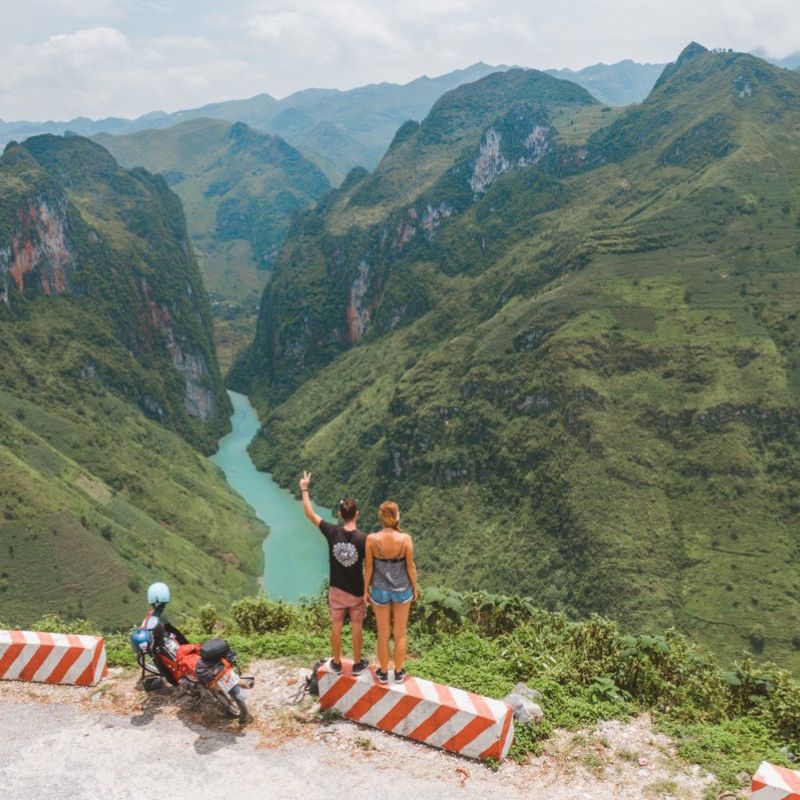
You should choose attire suitable for the weather conditions and sightseeing locations. The temperature in Ha Giang can be quite low. Therefore, when traveling to Ha Giang, you should wear warm clothing.
Prepare a detailed itinerary for exploring Ha Giang to ensure your trip goes smoothly.
Consider having a few alternative destinations in case the places you plan to visit are not operational or if there are access issues.
Be sure to pack everything you need for your Ha Giang trip, including clothes, a jacket, sunglasses, hats, shoes, sunscreen, raincoat, necessary medications, and personal items.
Carry enough cash to avoid theft or loss.
Bring a power bank for your phone in case of battery depletion.
You can prepare some snacks or educational materials as gifts for the ethnic children.
How much does the Ha Giang loop cost?
The cost of doing the Ha Giang Loop in Vietnam can vary significantly based on several factors, including your choice of accommodation, transportation, food, and other personal expenses. Here’s a breakdown to give you a rough estimate:
Transportation
- Motorbike Rental: Approximately 150,000 – 200,000 VND per day ($6 – $9 USD).
- Fuel: Around 100,000 VND per day ($4.5 USD), depending on your bike and how much you ride.
- Bus from Hanoi to Ha Giang: Around 200,000 – 300,000 VND each way ($9 – $13 USD).
Accommodation
- Homestays/Guesthouses: Ranging from 100,000 to 300,000 VND per night ($4.5 – $13 USD).
- Hotels: For more upscale options, prices can range from 500,000 VND and above per night ($22 USD and above).
Food and Drink
- Local Meals: Approximately 30,000 – 50,000 VND per meal ($1.3 – $2.2 USD).
- Western Meals: Can be more expensive, around 100,000 – 200,000 VND ($4.5 – $9 USD).
Miscellaneous
- Entrance Fees: Some attractions have small entrance fees, typically around 10,000 – 50,000 VND ($0.5 – $2.2 USD).
- Emergency Funds: It’s always wise to have a little extra for unexpected expenses.
Total Estimated Cost
- Budget Traveler: Averaging 600,000 – 800,000 VND per day ($26 – $35 USD), including all expenses.
- Mid-range Traveler: Approximately 1,000,000 – 1,500,000 VND per day ($44 – $65 USD).
- Luxury Traveler: 2,000,000 VND per day and above ($87 USD and above).
Final thoughts and travel tips
Embarking on the Ha Giang Loop is the adventure of a lifetime, offering breathtaking landscapes, rich cultural experiences, and a sense of freedom on the open roads. To ensure a memorable and safe journey, here are some travel tips:
Safety First: Always wear a helmet while riding. Drive cautiously, especially on unfamiliar mountain roads.
Health Precautions: Carry basic first aid and any personal medications. Be prepared for altitude changes and potential motion sickness.
Local SIM Card: Having a local SIM card is invaluable for navigation and in case of emergencies.
Weather Preparedness: The weather can be unpredictable. Pack for cold and rainy conditions, especially if traveling during the cooler months.
Language Barrier: Learning a few basic Vietnamese phrases can be helpful. A translation app can also be beneficial.
Cash is King: Many places in Ha Giang may not accept credit cards. Ensure you have enough cash, especially when traveling in remote areas.
Travel Insurance: Consider getting travel insurance that covers motorbiking, especially if you’re renting a bike.
Plan But Be Flexible: While having an itinerary is great, be open to deviating from it. Sometimes the best experiences are unplanned.
Pack Lightly: Only carry essentials on your bike to make your ride more comfortable and manageable.
Stay Connected: Inform someone about your travel plans and check in regularly, especially if traveling alone.
The Ha Giang Loop is a famously beautiful route that enthralls travelers with its stunning scenery, rich cultural history, and friendly locals. Travelers will have an amazing experience riding this well-known motorbike route in Northern Vietnam, which passes through colorful ethnic villages, breathtaking mountain passes, and picturesque valleys. Ha Giang doesn’t just offer a route; it offers a transformative experience, a chance to embrace the unexpected and a journey that challenges and changes you, making it a must-visit for anyone who yearns to experience the road less traveled.
FAQs
How long does it take to complete the loop?
The duration to complete the Ha Giang Loop typically ranges from 3 to 5 days. This timeframe allows for a comfortable pace, enabling travelers to fully immerse themselves in the stunning landscapes and unique cultural experiences that the route offers. While it’s possible to rush through in a shorter period, it’s advisable to take the time to explore and appreciate the scenic stops, ethnic villages, and historical sites along the way. For those who wish to delve deeper into the local culture or engage in more extensive exploration, extending the trip beyond 5 days can be rewarding.
Is the Ha Giang Loop dangerous?
The Ha Giang Loop is known for its challenging terrain, featuring narrow, winding roads and steep inclines, which can present risks, particularly for inexperienced motorbike riders. The mountainous route demands cautious and responsible riding, as conditions can vary with weather changes and road surfaces. While it’s not inherently dangerous for prepared and skilled riders, it does require a heightened sense of awareness and respect for local traffic norms. For those not confident in their riding abilities, it’s advisable to join a guided tour or hire a driver.
Can I do the loop if I don’t ride a motorbike?
Yes, you can experience the Ha Giang Loop even if you don’t ride a motorbike. There are alternative options such as joining organized tours that use cars or minibusses, which provide a safe and comfortable way to explore the stunning landscapes and cultural highlights of Ha Giang. These guided tours often include stops at all the major attractions along the loop and offer the added benefit of experienced guides who provide valuable insights into the local culture and history.
Additionally, for those who prefer a more personalized experience, hiring a private car with a driver is another viable option. This allows for a flexible itinerary tailored to your interests and pace, ensuring you don’t miss out on the incredible experience the Ha Giang Loop offers.
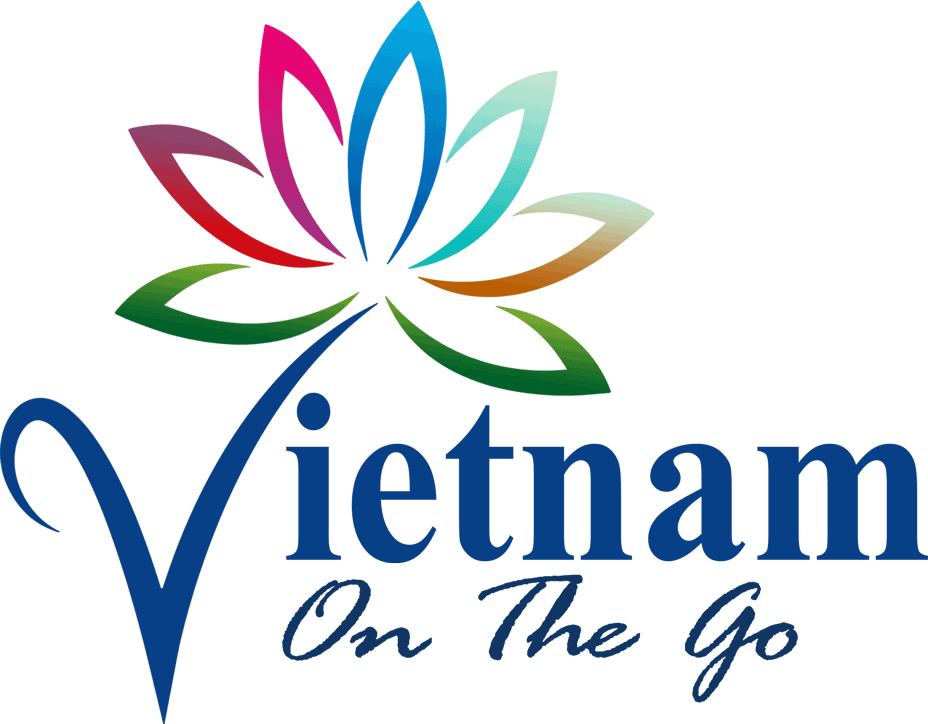
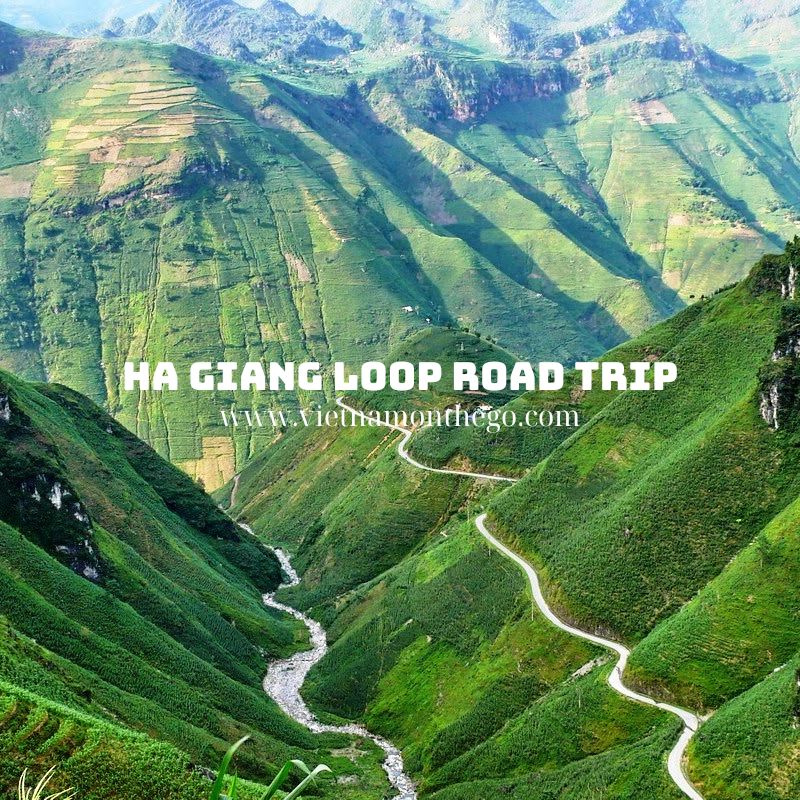
![[3 DAYS 4 NIGHTS] Ha Giang Loop Motorbike Tour from Hanoi](https://vietnamonthego.com/wp-content/uploads/2024/03/ha-giang-loop-tour-6-300x300.jpg)
![[4 DAYS 5 NIGHTS] Ha Giang Loop Motorbike Tour from Hanoi](https://vietnamonthego.com/wp-content/uploads/2024/03/ha-giang-loop-tour-300x300.jpg)